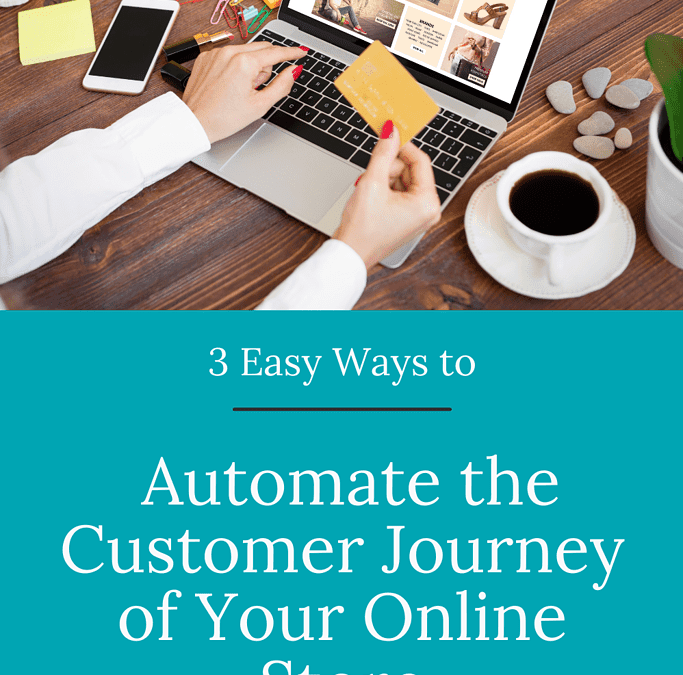Are you looking to improve the efficiency of your customer journey through automation? Automating your customer journey simplifies and streamlines traditionally time-consuming marketing activities that directly impact how users interact with and experience your brand. This not only enables you to satisfy customer needs but also helps you to grow a successful and sustainable online store.
In this post, we will show you three easy ways to automate your customer journey within your eCommerce store. By implementing these strategies, you can save time and resources while providing a better customer experience. So, read on to learn how you can streamline your customer journey and take your eCommerce business to the next level.
The benefits of automating your customer journey
In today’s digital age, customers have high expectations. According to a recent survey, 82% of customers expect retailers to accommodate their preferences and meet their expectations. In order to meet these expectations, particularly in the online sphere, automation is one of the best ways to improve customer experience. By automating your customer journey, you can gain several advantages, including:
- Improved customer relationships: Automation allows you to personalize customer interactions and tailor communication to their specific needs. This helps to build trust and loyalty, leading to stronger customer relationships.
- Effective data management: Automation makes it easy to collect, store, and analyze customer data. This allows you to gain valuable insights into customer behavior, preferences and buying patterns.
- Less time and money spent on marketing processes: Automation can streamline repetitive tasks, such as email marketing, social media management, and customer service, saving you both time and money and allowing you to focus on your core business and project management.
- Streamlined customer journeys: Automation allows you to create a seamless and efficient customer journey, reducing friction points and improving the overall experience.
- Personalized customer service: Automation allows you to provide personalized customer service through chatbots, email automation, and other digital channels, enabling you to serve customers in a more efficient and effective way.
- Better understanding of customer behavior: With automation, you can track and analyze customer data in real-time, giving you a better understanding of their behavior, preferences, and needs. This enables you to make data-driven decisions and improve your overall marketing strategy.
Overall, automating your customer journey can be a powerful way to improve customer experience, streamline processes, and gain valuable insights into customer behavior. By taking advantage of automation, you can build stronger relationships with your customers, increase conversions, and grow your business.
3 ways to improve your customer journey through automation
Now that you understand the benefits of automating your customer journey, it’s time to explore some specific ways to do so. In this section, we will take you through four of the best ways to automate the customer journey.
1: Set up email automation
Email is one of the most automated marketing channels, with over half of marketers using it to reach their customers. This is because email automation offers many benefits, including:
- Increased efficiency: Automating email campaigns saves time by automating repetitive tasks, such as sending out welcome emails, abandoned cart emails, and post-purchase follow-up emails.
- Greater personalization: Email automation allows you to personalize content and tailor messages to specific segments of your audience, leading to higher open and click-through rates.
- Caters to the bottom half of the marketing funnel: Email automation is especially useful for the bottom half of the marketing funnel, where the goal is to convert leads into paying customers.
To make the most of email automation, tailor your emails to specific segments of your audience at different stages of the customer journey. For example, you can use it to send ‘back in stock’ emails to alert customers who want to be notified when an item is back in stock. This helps to keep your customers engaged and increases the likelihood that they will make a purchase.
Another example is sending post-purchase follow-up emails to upsell or cross-sell products to customers who have already converted. This can help increase customer lifetime value (CLTV) and repeat purchases.
Using the data from your email automations, you can further segment your audience, create targeted campaigns, and personalize your messaging. For example, by analyzing your open-rate data, you can see which subject lines and sending times are most effective at getting your emails opened. With click-through rate data, you can see which elements of your emails, such as call-to-action buttons, are driving the most conversions.
This allows you to make data-driven decisions that will improve the performance of your email campaigns and help you reach your marketing goals. Additionally, you can use this data to compare the performance of different campaigns and track the overall effectiveness of your email marketing strategy over time.
2. Offer subscription-based payment plans
Subscription-based payment plans are a great way to generate recurring revenue for your business. They involve customers paying a regular fee, usually on a monthly or annual basis, to access products or services. This model is particularly popular in the digital world, with companies like Netflix and Amazon Prime using it to great success. All you need to set it up for yourself is a recurring subscription plugin on your website.
There are several benefits of using a subscription-based model for your online store. These include:
- Recurring revenue: Subscriptions generate recurring revenue, which is more predictable and stable than one-time sales.
- Increased customer loyalty: Subscription-based models can create a sense of exclusivity, which can increase customer loyalty.
- Better customer insights: With subscriptions, you have a better understanding of your customer’s needs and preferences, which can help you to create targeted campaigns and improve the overall customer experience.
- Monetizing Premium content: Subscriptions can be used to monetize premium content, such as online courses, magazines, and video content.
Examples of products or services you could offer on subscription include:
- Online courses
- Software as a Service (SaaS)
- Virtual events
- Product box
- Premium content
There are many tools available that can help you set up a subscription service or membership website with recurring payments. For example, if you want to make the switch from ad-generated revenue to subscriptions and monetize your content, a paywall plugin such as Zlick is a good option.
3. Automate your own workflow
While automation is often thought of in the context of marketing, there are plenty of ways to automate your processes to improve the customer journey outside of marketing. Automating your eCommerce store’s workflow can help you streamline operations and improve customer experience.
One of the key benefits of automating your internal workflow is that it allows you to focus on more important tasks. By automating repetitive and time-consuming tasks, you can free up time to focus on more strategic and value-adding activities. Additionally, automation can help reduce errors and improve accuracy, leading to higher customer satisfaction.
There are many ways to improve your internal workflow through automation. Here are a few examples:
- Automatic order printing: You can set up automatic order printing to provide your relevant warehouses with an instant record of an order. This allows them to act immediately to quickly fulfill the purchase and delivery, improving customer satisfaction.
- Automated inventory management: You can use automated inventory management to ensure that your products are always in stock and readily available to customers. This can help to reduce backorders and improve customer satisfaction.
- Automated shipping and tracking: Automated shipping and tracking, facilitated by a reliable shipping plugin, allow you to provide customers with real-time updates on the status of their orders, enhancing transparency and fostering greater customer trust.
- Automated financial processes: You can automate financial processes, such as invoicing, payment, and accounting, to reduce errors and improve accuracy. Additionally, investing applications can help streamline your investment strategies and simplify portfolio management, making it easier to achieve financial goals.
By automating repetitive and time-consuming tasks, you can free up time to focus on more strategic and value-driven activities within your business.
Use automation to create better customer journeys


Overall, automating your customer journey can help you simplify and streamline traditionally time-consuming marketing activities that directly impact how users interact with and experience a brand. This enables you to satisfy customer needs while growing a successful and sustainable online store. The benefits of automating the customer journey include improved customer relationships, effective data management, less time and money spent on marketing processes, streamlined customer journeys, personalized customer service, and a better understanding of customer behavior.
The article discussed three of the best ways to automate the customer journey, which include setting up email automation, offering subscription-based payment plans, and automating your own workflow. By implementing these strategies, you can take the first step towards automating your customer journey and delivering a more seamless and personalized experience for your customers.



